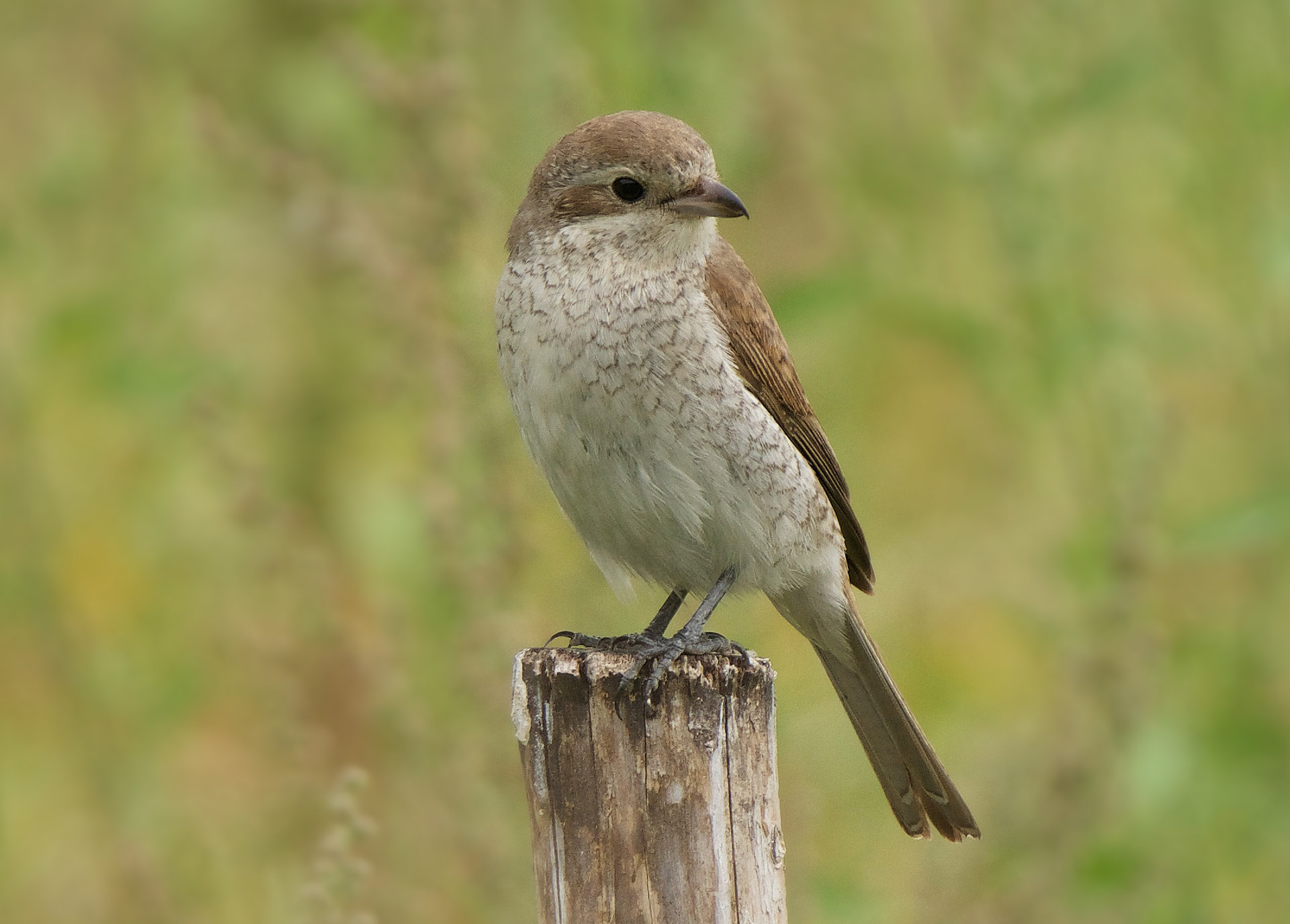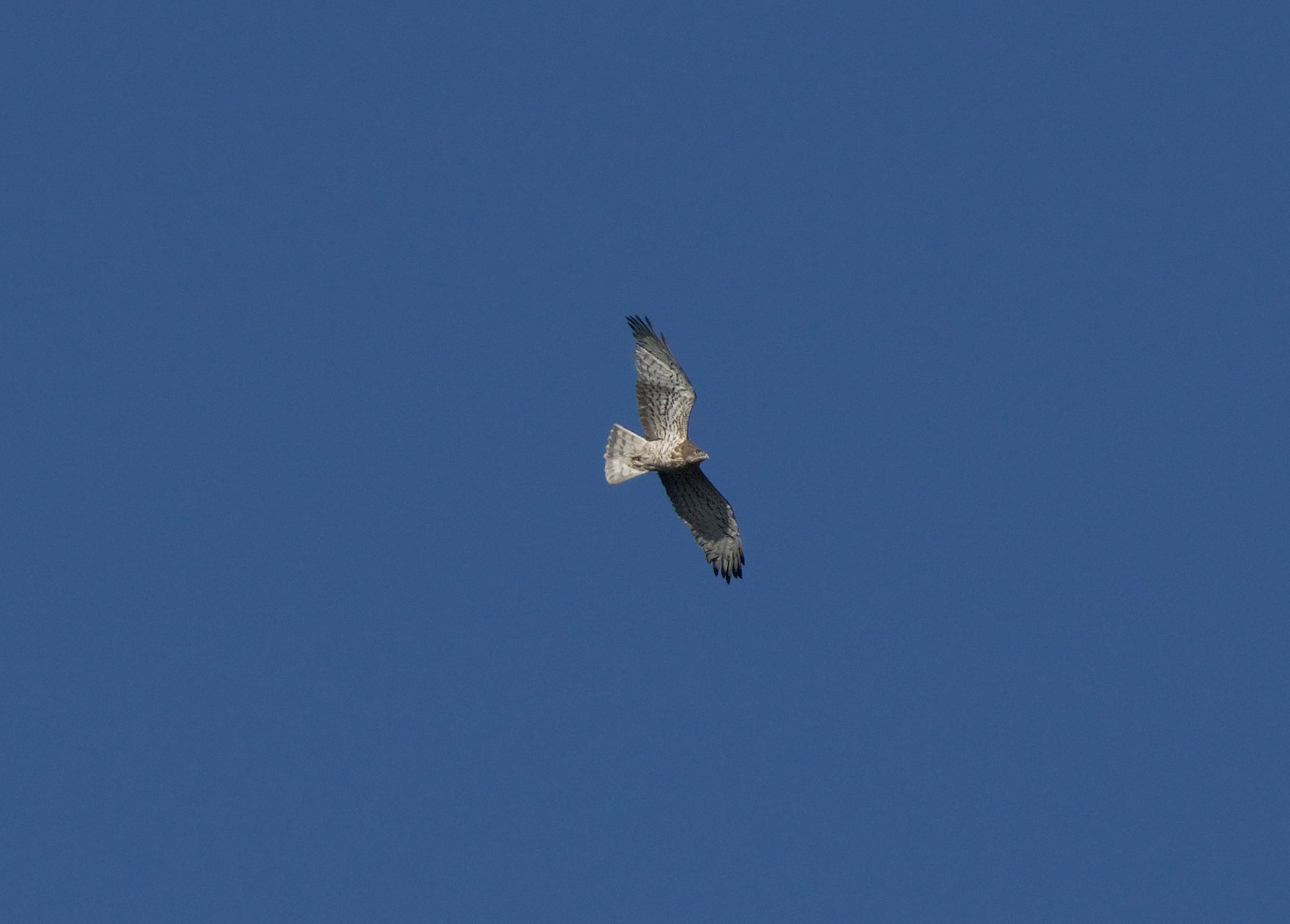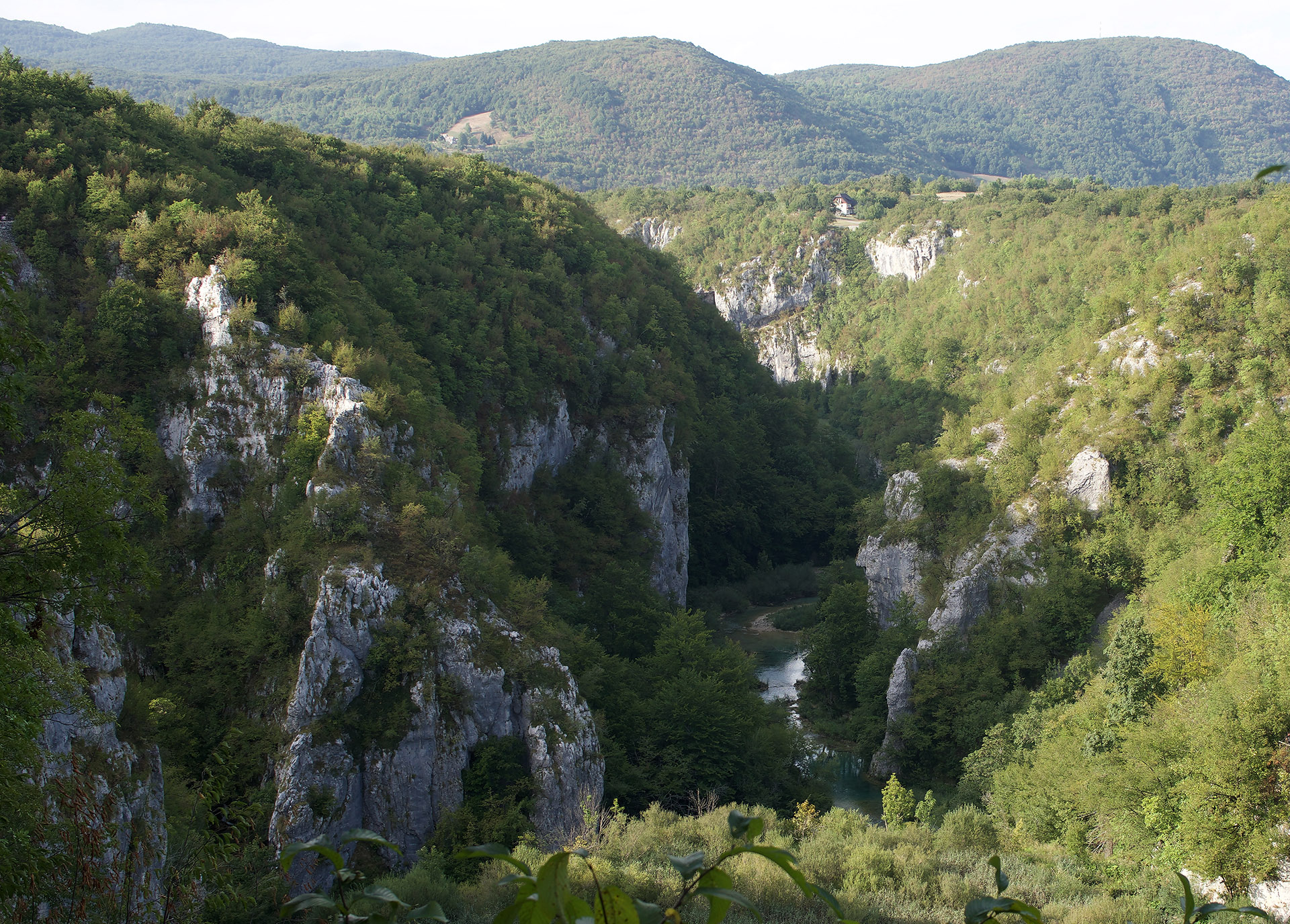This is the state of the public by-way from Duck lane, Shadoxhurst on route to the Woodchurch end. Continued daily use by the activivities of a small group of off-roaders are leaving the byway dangerous and obstructed for walkers, horse riders and land owners.
Tuesday 29 May 2018
Thursday 21 September 2017
Friday 8 September 2017
Northern Croatia, birding mixed with a family holiday.
 |
| 1 of 5 Juvenile Golden Orioles that frequented our Lodge garden near Plitvice National Park |
For the last 10 days of August we visited Northern Croatia, Kvarner region, for a family holiday. It was very much a last minute decision - the weather was going to be good and and it looked like a new good value destination for the 4 of us. We figured that we'd spend some time on the coast lazying around and then head inland to the hills for walks and a little birdwatching. With a Hire Car for transport we visited the hilly forested landscapes adjacent to Plitvice National Park including the official park trails.
Flying to Rijeka Airport, on the island of Krk, we started our stay at Crikvenicka a compact holiday town pushed tight into a rocky wooded steep coastline.
Throughout our stay the weather was hot and sunny with temperatures in the 30's. We were not going to be near or visting any wetlands but armed with internet reports of woodland raptors, woodpeckers and owls the forests and hills would create enough avian interest for me.
My first morning walks on the coast quickly drew a picture of what to expect for the days to come. Most days in the wooded gardens surrounding our apartment we were awakened by the flutey calls of Golden Orioles. They sounded so peaceful and dreamy there didn't seem to be a need to get out of bed and physically see the birds. Once out of our apartment in the wooded slopes and gardens that dropped down to the rocky shore, Marsh tits, Hawfinches and Song Thrushes were common in the parkland and gardens. Across the bay a few Shags fished between moored leisure boats and small parties of Little Terns with occasional Yellow-legged Herring Gulls in tow fished in the distance. In the skies above Crikvenica there was little avian interest at all. This was surprising because the hillls ascended rapidly into a wild mountain landscape that you could imagine everything from Eagles to Kestrels being present. We eventually started to see single Griffon Vutures passing between the mainland and the island of Crec.
Based on a 'enthusiastic' review in 'Lonely Planet Croatia' we visited Ucka national park near Rjelka. From there we took pleasant enough wooodland trails through Beech forests ending with with superb mountain views with the Italian Alps in the distance. Birds here were very scarce, the odd Great Spotted Woodpecker, Chaffinch, Common Buzzard, Marsh Tit, Treecreeper - nothing you might not expect to see in the UK.
Crikvenica is a pleasant enough resort, popular with, Germans, Austrians and all peoples of central Europe. The island of Krk is very busy - avoiding July and August would make life much easier in exploring the island.
The second half of our holiday was a 2 1/2 hour drive from the coast close to world famous Plitvice National Park. Here the Karst Limestone countryside, complete with Gorges and waterfalls looked beautiful.
We stayed at a village close to Plitvice and from our Lodge we had views of seemingly endless mountains and forests stretching into Bosnia. Surely there would be Birds of prey and Owls galore? We could also see plenty of mixed farmland, with open countryside and rough meadows of birch and bracken. I planned early morning and evening walks just on the feel that they would provide sounds and views of some of SE Europes speciality flora and fauna.
Sadly, trully outstanding wildlife never really materialised. With the exception of Common Buzzards which were plentiful, birds of prey were very scarce and in our 5 day stay I saw just 1 Sparrowhawk and no Kestrels. At night the only Owl I could hear was one distant Tawny Owl. My night walks did provide me with good views Greater Horse Shoe Bats and a typical Mediterranean chorus of Tree frogs and Crickets were always there to hear.
My morning walks through undulating woodlands and open scrubby countryside were better. Autumn migration was underway, juvenile Red backed Shrikes and Spotted flycatchers mixed with Wheatears and thrushes were plentiful. In the sky occasional flocks of Beeeaters were on the move. In the hills where I walked I would often see a lonesome Short toed Eagle and a Raven pair. One morning a flock of 52 Ravens passed through. As our holiday was in middle / late August I didn't think we would be too late for Honey Buzzards migrating, but alas, I left not seeing none. I saw ocassional Roe Deer and Shooters' hides everywhere. I saw just one Squirrel and with the exception of a close by roar of a Boar no other mammals were seen.
Woodpeckers for which the Plitvice National Park is famous for, were also a struggle to see and hear. Unlike home, Lesser Spotted Woodpeckers were fairly common and often in the immediate vicinity of Great Spotted Woodpeckers. I heard just one Middle Spotted Woodpecker from our apartment balcony. Our lodge balcony was to be our best birding site. A mixture of woodland, grape vines and vegetable patches complete with chickens surrounded our holiday house, Black Redstarts chased about on the roof tops, Tree Sparrows mixed in with house sparrows hovering up the chicken feed. In the Firs and Cherry trees around the apartment, little flocks of Hawfinches moved around never far from Nuthatches and Marsh Tits and Spotted flycatchers. In the mountains visible behind we saw Short toed Eagle, passing flocks of Bee eaters and Golden Orioles. The latter was to become the most memorable birds of our trip, as a small flock of Juvenile Golden Orioles which chased each other around in the tree canopy, occasionally gave very close views from the first floor of our lodge windows and balcony.
FACTS
We flew to Rijeka from Stanstead (Ryan Air). Car hire is straight forward enough (we chose Hertz).
Croatia is much cheaper than Spain, France - so is a good option for families. Come here to see Plitvice National park. It has family friendly walking, unique, beautiful and memorable.
There are lots of good National Parks for better birdwatching in Croatia, all will have closer airports to them than Rijelka.
The Lonely Planet Croatia guide is useful - but we found it tended to over embelish how good every beach/town was. Likewise internet birdwatching website claims for Plitvice National park seem to be exaggerated or in accurate based on our brief stay in Croatia. There are other birdwatchers's reports that have touched upon the lack of birds of prey here, I left feeling puzzled that such stunning landscapes could be so silent of birds. Shooting to blame?
 |
| Red Backed Shrikes were common. |
 |
| This Short toed Eagle was a daily regular near Plitvice National Park |
 |
| Wryneck, near Crikvenica, Croatia |
 |
| A ubiquitous Spotted flycatcher |
 |
| Juvenile Red Backed Shrikes were common, but the adults had mostly departed south |
 |
| Plitvice National Park |
 |
| Plitvice National park |
 |
| Mountainous karst scenery above Crikvenica, Hawfinches seemed the commonest birds here. Beeeaters and Red backed shrikes were always to be seen, plus 1 party of Alpine Swifts. |
 |
| Great Banded Grayling common in Croatian countryside |
 |
| Another stunning Juvenile Golden Oriole |
 |
| Brown Bear remains at the caves of Barac near Plitvice National Park - definitely worth a visit. |
 |
| Keeled Skimmers, were common at Plitvice National Park |
 |
| Chequered Blue, Plitvice National Park |
Thursday 7 September 2017
Wednesday 7 September 2016
Honey Buzzard over Bromley Green environs
Honey Buzzards are like buses, you wait for years for one and then surprise, four turn up at once. On the same day as I watched two Honey Buzzards over the garden in Shadoxhurst another two Honeys were being watched just 3 miles away over mixed countryside north of Bromley Green.
Fortunately for diligent patcher and finder Bob P. they remained in the area for a few days before only this female bird with some tail moult remained. We believe the second Bromley Green bird wasn't a bird I'd seen earlier as Bob had noticed a heavy wing moult not present in the Shadoxhurst birds. These pics were taken on the last day it was seen, September 3rd. By now the bird may well have traveled through France across the Pyrenes and crossed the Mediterranean to Libya, ready to move south of the Sahara to winter in sub-tropical Africa.
Fortunately for diligent patcher and finder Bob P. they remained in the area for a few days before only this female bird with some tail moult remained. We believe the second Bromley Green bird wasn't a bird I'd seen earlier as Bob had noticed a heavy wing moult not present in the Shadoxhurst birds. These pics were taken on the last day it was seen, September 3rd. By now the bird may well have traveled through France across the Pyrenes and crossed the Mediterranean to Libya, ready to move south of the Sahara to winter in sub-tropical Africa.
Wednesday 24 August 2016
Honey Buzzards passing high over Shadoxhurst

For the last few summers my family and I would be camping in France at this time of the year and the forests we camped in would be the haunt of Honey Buzzards. In mid-August Honey Buzzards parties are easy to find simply by listening for the noisy, juvenile bird cries. So, we have an ear for the plaintive and far-crying call of Honey Buzzards and from watching summer Honey Buzzards in France I know it's usually the young birds that are making the calls as they follow their parents across forest and open countryside.
So purely by chance whilst in the garden this morning, I heard the distant calls of Honey Buzzards - and with the blue skies and high temperatures it did feel like summer-time France too. I looked above and into the skies around me and couldn't see anything. I grabbed my camera and went to the back of the garden looking south over Orlestone Forest, in the distance there were 7 Common Buzzards in the sky - impossible to distinguish any as Honey Buzzards. I watched them for perhaps 5 minutes before, luckily, they all soared back towards me.
Through my camera I could pick-up the longer-tailed characteristics of Honey Buzzard and captured a few pics to record my first Honey Buzzards over Shadoxhurst for a good 10 years. My only regret is that I didn't capture an image of a juvenile bird despite hearing, what I presumed, was one calling.
The pics for reference were taken with a Sony A6300 (24mp) @ 560 mmm on a Tamron 150-600 mm.
 |
| Adult Male (above) and Female Honey Buzzards, Shadoxhurst August 24th |
Tuesday 14 June 2016
Long Horned Bee and Alex Farm Pasture update
 |
| A Long Horned Bee at Alex Farm Pastures - June 12th 2016. |
 |
| Long Horned Bee exclusively visiting Bramble - June 12th 2016. |
 | ||
Long Horned Bee and Thick Legged Pollen Beetle.
|
 |
| Male Cuckoo - one of 3 males in the Alex Farm / Stone Wood area. |
One species the Cuckoos probably parasitise is Nightingale. They are present in good numbers this year, not just at Alex's but also in the surrounding blackthorn hedges leading back to Shadoxhurst. There are many unpaired birds still singing, and paradoxically at the same time, some Nightingales have fledged their first and only brood. The numbers of breeding Nightingales at Alex’s is hard to ascertain especially in the second heavily thicketed field of the site which is their favoured breeding area. An indication of how many birds present was given when I watched a Jay trying to raid their nests. The calls of many birds eventually gave a full-on chase to a Jay, no doubt plundering their eggs and chicks. As the Jay vanished into the woodland behind I was quite surprised at the number of Nightingales (5) in pursuit, temporarily abandoning their nests in support of their neighbours.
 |
| Turtle Dove. June 5th still in the area up to June 12th |
 |
| Downy Emerald Dragonfly at the pond Alex Farm Pastures June 11th 2016. |
 |
| One of many Broad Bodied Chasers on site June 11th |
 |
| Four Spotted Darter, up to 20 present with several egg laying (with BB chasers) at the pond. June 11th |
 |
| Recently fledged Grey Wagtail, at the pond, Alex Farm Pastures. June 11th |
 |
| Yellow Shell Moth, June 11th |
On the same day as watching the Downy Emerald, I had also photographed insects among the orchids and thistles within the Alex Farm Pastures meadow. I had already noticed the Wool Carder Bee, one of the few I’m able to identify, when I started to notice another restless Bee with long antennae collecting pollen from Bramble blossom. It was so distinctive and unforgettable I knew it was something I had not seen before. I quickly 'googled’ the description and was immediately delivered the I.D. of Long Horn Bee, a rare and fast declining southern UK species. As far as I’m aware its not been recorded here before or at the very least not recently. Time and, I’ll admit it, lack of knowledge stops me commenting on the flora of the site, The summer wildflower swathe is yet to come into full flower, but there are plenty of Common Spotted Orchids and Marsh Thistles in flower not to mention odd clumps of Ragged Robin and various vetches to see. Among the cover of the ground plants there are many common Lizards to see, the numbers here seeming higher than at other local sites. So, whilst the weather has been unpredictable (no doubt contributing to poor Butterfly and Moth numbers on the site this spring) it hasn’t spoiled what has been a varied display of some of Alex Farm Pastures' unique and special wildlife.
FIND OUT MORE
Alex Pasture is a 11 acre site, South of Shadoxhurst, Kent
LINKS (but content dated)
http://www.sssi.naturalengland.org.uk/citation/citation_photo/1006780.pdf
https://en.wikipedia.org/wiki/List_of_Sites_of_Special_Scientific_Interest_in_Kent
Subscribe to:
Posts (Atom)













